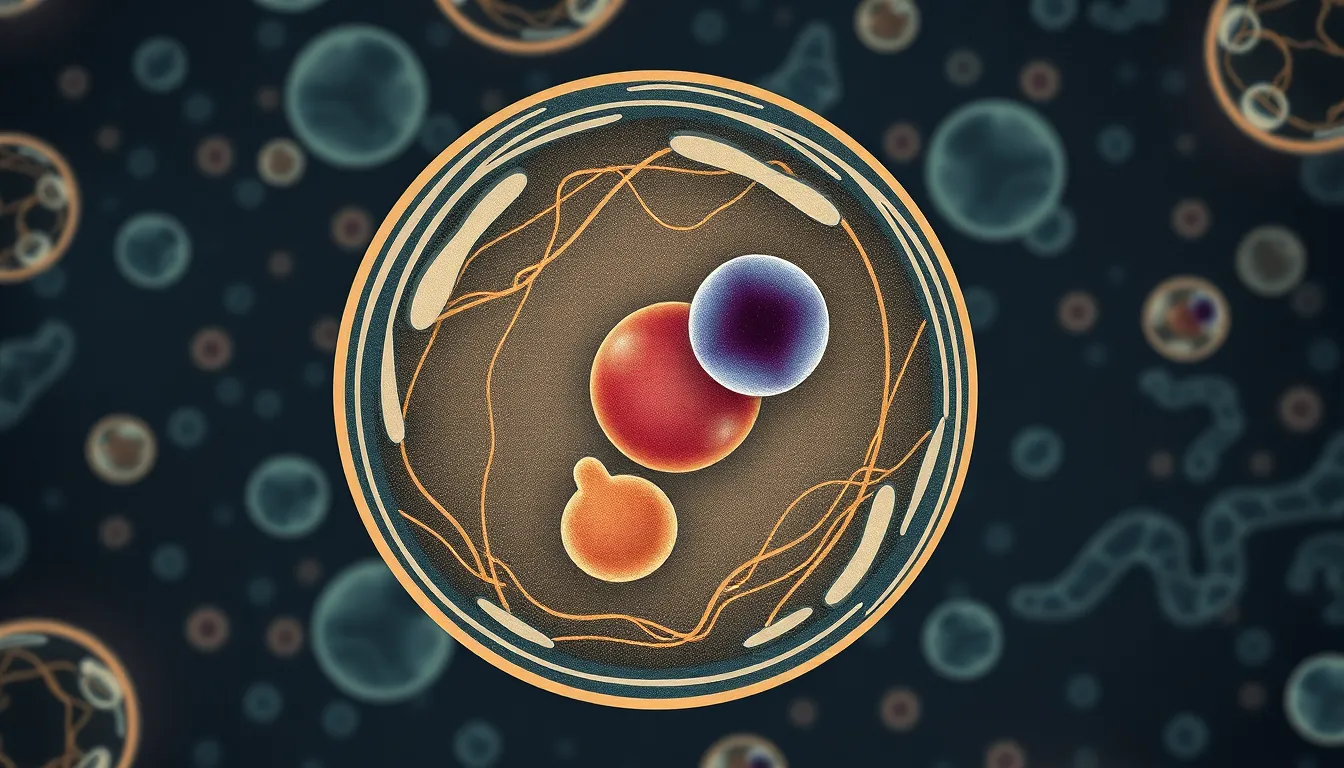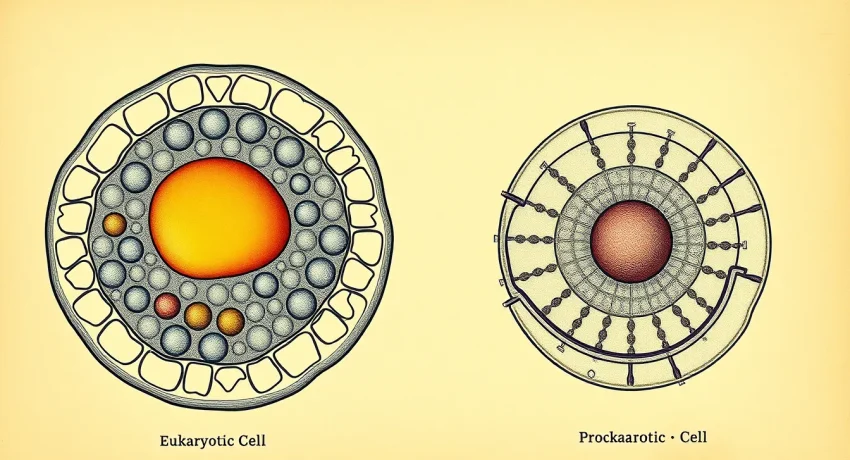Table of Contents
ToggleWhen it comes to the cellular world, the nucleus often takes center stage, but is it prokaryotic or eukaryotic? This question might seem like a trivial pursuit, but understanding the nucleus is key to unraveling the mysteries of life itself. Picture it as the command center of a bustling city—some cities have mayors (eukaryotes), while others run more like a free-for-all (prokaryotes).
Understanding Cell Types
Cell types play a vital role in the distinction between prokaryotic and eukaryotic organisms. Understanding these differences clarifies how life operates at a cellular level.
Prokaryotic Cells
Prokaryotic cells lack a nucleus and membrane-bound organelles. Bacteria and archaea represent the primary examples of prokaryotic organisms. These cells feature a simple structure, often with circular DNA located in an area called the nucleoid. Reproduction occurs asexually through binary fission. With a size typically ranging from 0.1 to 5.0 micrometers, they remain significantly smaller than eukaryotic cells. Their cell wall provides structure and protection, often containing peptidoglycan in bacteria.
Eukaryotic Cells
Eukaryotic cells contain a nucleus and multiple membrane-bound organelles. They include organisms such as animals, plants, fungi, and protists. These cells exhibit a more complex structure, possessing linear DNA housed within the nucleus. Sizes generally range from 10 to 100 micrometers, allowing for specialized functions. Mitochondria, endoplasmic reticulum, and Golgi apparatus are examples of organelles found in eukaryotic cells. Reproduction occurs both asexually and sexually, enabling greater genetic diversity among these organisms.
The Nucleus Explained

The nucleus serves as a vital component in eukaryotic cells, acting as the control center for cellular activities. This membrane-bound organelle houses the cell’s genetic material.
Structure of the Nucleus
A double membrane surrounds the nucleus, known as the nuclear envelope. This envelope contains nuclear pores that regulate the passage of materials. Chromatin, a complex of DNA and proteins, resides within the nucleus, condensing into visible chromosomes during cell division. The nucleolus, a distinct structure inside the nucleus, plays a key role in ribosome synthesis. Nuclei typically measure between 5 to 10 micrometers in diameter, reflecting their necessity for accommodating genetic material and associated functions.
Functions of the Nucleus
Regulating gene expression stands as the primary function of the nucleus. It determines which proteins are produced, influencing cellular behavior. The nucleus also facilitates DNA replication, ensuring accurate copies during cell division. Additionally, it orchestrates ribosome production through the nucleolus, sending ribosomal RNA to the cytoplasm for protein synthesis. This organelle plays a crucial role in maintaining cellular homeostasis by housing and protecting DNA from damage. Overall, the nucleus significantly contributes to cell function and identity.
Is Nucleus Prokaryotic or Eukaryotic?
Understanding cell structure helps determine whether a nucleus is prokaryotic or eukaryotic. Eukaryotic cells possess a defined nucleus, while prokaryotic cells do not.
Key Differences
Prokaryotic cells, such as bacteria, lack a nucleus and membrane-bound organelles. Their DNA exists as a circular structure within the cytoplasm. Eukaryotic cells contain a nucleus encased in a double membrane, housing linear DNA organized into chromosomes. Distinct sizes also simplify differences: prokaryotic cells range from 0.1 to 5.0 micrometers, whereas eukaryotic cells measure between 10 to 100 micrometers. Specialized organelles in eukaryotic cells facilitate complex processes, underscoring their advanced organization.
Importance in Cell Biology
The nucleus plays a crucial role in eukaryotic cell function. It serves as the control center, regulating gene expression and DNA replication. This regulation directs various cellular activities, influencing overall cell identity. Genetic material organization within the nucleus ensures efficient processes like ribosome production and cellular homeostasis. Moreover, the nuclear envelope’s nuclear pores control the movement of substances, contributing to cellular function stability. The nucleus’s presence in eukaryotic cells supports increased genetic diversity and complexity, distinguishing these cells from their prokaryotic counterparts.
Implications of Nucleus Classification
Understanding nucleus classification carries significant implications across various fields, especially in scientific research and medicine. This knowledge impacts how researchers approach cellular biology and the study of life forms.
In Scientific Research
In the realm of scientific research, determining whether a nucleus is prokaryotic or eukaryotic shapes experimental approaches. Researchers use this classification to explore cellular mechanisms and the evolutionary relationships between organisms. Prokaryotic cells, like bacteria, exhibit simpler structures, providing a model for studying basic biological functions. Eukaryotic cells, including those from plants and animals, allow investigation into more complex processes like cellular differentiation. The nucleus aids researchers in identifying gene regulation patterns and understanding genetic diversity within eukaryotic populations. Furthermore, insights gained from studying these cellular differences lead to advances in biotechnology and genetic engineering.
In Medicine
In medicine, the implications of nucleus classification play a vital role in disease treatment and diagnostics. Eukaryotic cells can exhibit mutations that contribute to various health conditions, including cancer. Identifying the nucleus structure helps in understanding how these mutations impact gene expression and cell behavior. Prokaryotic organisms, on the other hand, are often associated with infections. Knowledge of their cellular structure informs antibiotic treatment strategies. By distinguishing between prokaryotic and eukaryotic cells, medical professionals can develop targeted therapies that minimize harm to human cells. This accuracy enhances patient outcomes and promotes the development of personalized medicine.
The distinction between prokaryotic and eukaryotic cells is fundamental in cellular biology. Prokaryotic cells lack a nucleus and membrane-bound organelles while eukaryotic cells possess a well-defined nucleus that plays a critical role in regulating cellular functions. This difference not only shapes the structure and function of these cells but also impacts various fields like research and medicine. Understanding these classifications offers insights into cellular mechanisms and enhances approaches to disease treatment. By recognizing the complexities of eukaryotic cells and the simplicity of prokaryotic cells, one can appreciate the diverse forms of life on Earth and their unique biological processes.




